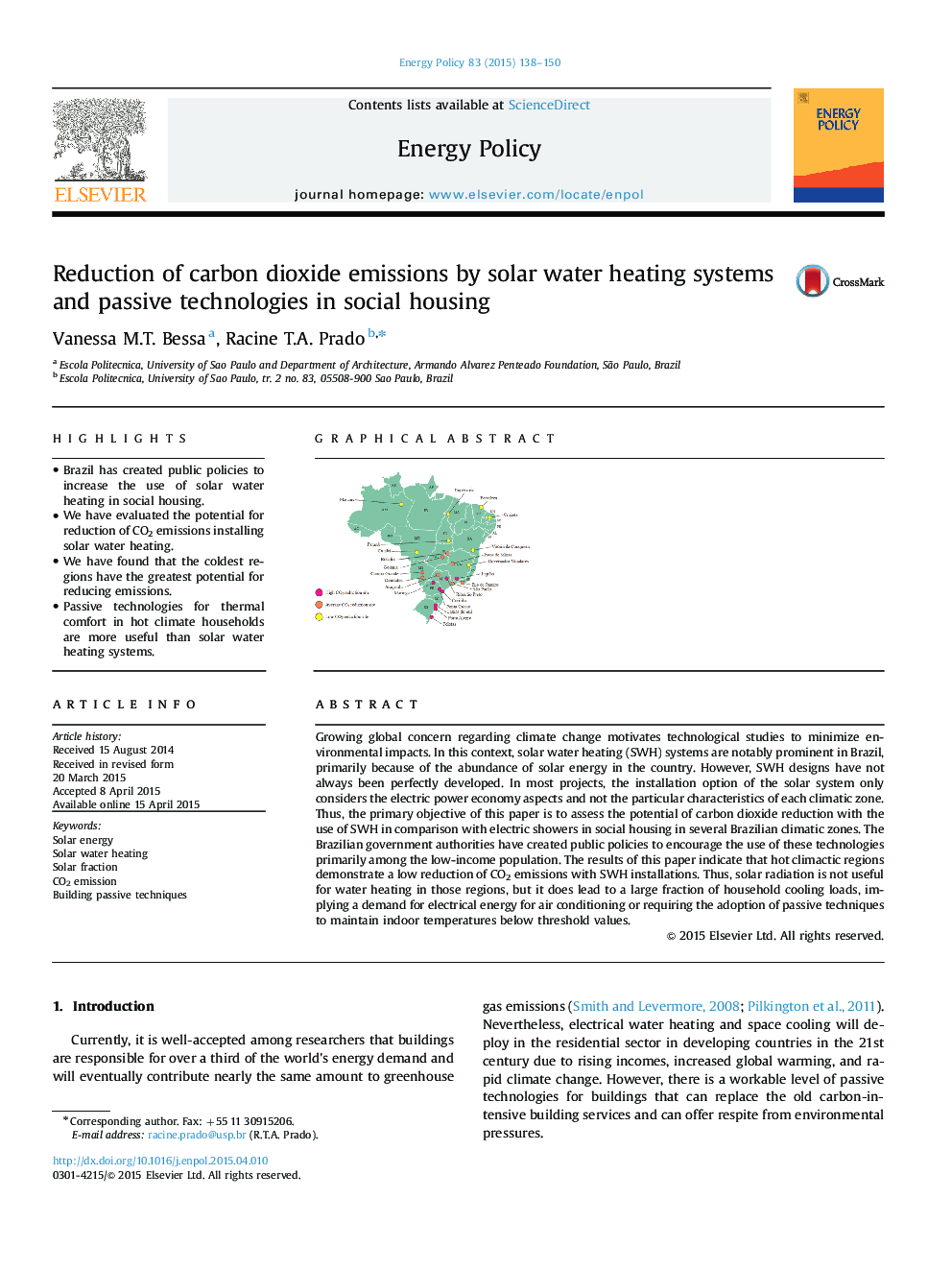| کد مقاله | کد نشریه | سال انتشار | مقاله انگلیسی | نسخه تمام متن |
|---|---|---|---|---|
| 995307 | 1481275 | 2015 | 13 صفحه PDF | دانلود رایگان |
• Brazil has created public policies to increase the use of solar water heating in social housing.
• We have evaluated the potential for reduction of CO2 emissions installing solar water heating.
• We have found that the coldest regions have the greatest potential for reducing emissions.
• Passive technologies for thermal comfort in hot climate households are more useful than solar water heating systems.
Growing global concern regarding climate change motivates technological studies to minimize environmental impacts. In this context, solar water heating (SWH) systems are notably prominent in Brazil, primarily because of the abundance of solar energy in the country. However, SWH designs have not always been perfectly developed. In most projects, the installation option of the solar system only considers the electric power economy aspects and not the particular characteristics of each climatic zone. Thus, the primary objective of this paper is to assess the potential of carbon dioxide reduction with the use of SWH in comparison with electric showers in social housing in several Brazilian climatic zones. The Brazilian government authorities have created public policies to encourage the use of these technologies primarily among the low-income population. The results of this paper indicate that hot climactic regions demonstrate a low reduction of CO2 emissions with SWH installations. Thus, solar radiation is not useful for water heating in those regions, but it does lead to a large fraction of household cooling loads, implying a demand for electrical energy for air conditioning or requiring the adoption of passive techniques to maintain indoor temperatures below threshold values.
Figure optionsDownload as PowerPoint slide
Journal: Energy Policy - Volume 83, August 2015, Pages 138–150
